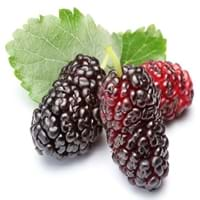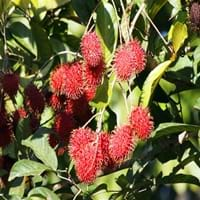Health Benefits
Anti-aging benefits, Boosts immune system, Cancer prevention, Flu treatment, Hair care, Heart care, Improves eye vision, Increases metabolic rate, Kidney stone treatment, Maintains healthy cholesterol level, Skin cleansing, Skin rejuvenation, Treatment of common cold, Treatment of skin Diseases
Anti-oxidant properties, Boosts immune system, Skin rejuvenation, Strengthening of bones
General Benefits
Boosts immune system, Controls blood sugar levels, Flu treatment, Improves eye vision, Maintains healthy cholesterol level, Treatment of common cold
Antiseptic properties, Cures headache, Removes waste from kidney
Skin Benefits
Anti-aging benefits, Skin cleansing, Treatment of skin diseases
Hydrates skin
Hair Benefits
Protects hair, Regulates hair growth
Good conditioner
Allergy Symptoms
Breathing difficulty, Itching, Nasal congestion, Redness of eyes, Runny nose, Sneezing
Chest pains, Rhinitis, Wheezing
Side Effects
Decrease in blood sugar levels, Allergic reaction
Unknown
Best Time to Eat
Best if taken as a breakfast (or empty stomach), As a snack in the late afternoon, Don't consume at night and before bed, Eat the fresh ones, avoid mixing with any other foods, don't eat after meal., Morning time (before lunch)
As a snack in the late afternoon, Don't consume at night and before bed, Eat the fresh ones, avoid mixing with any other foods, don't eat after meal., Morning time (before lunch)
Vitamin B5 (Pantothenic Acid)
Not Available
Vitamin C (Ascorbic Acid)
Vitamin K (Phyllochinone)
Phytosterol
Not Available
Calories in Fresh Fruit with Peel
Calories in Fresh Fruit without Peel
Not Available
Not Available
Calories in Canned Form
Not Available
Calories in Jam
Not Available
Calories in Pie
Not Available
Type
Berry
Tree fruit, Tropical
Season
Spring, Summer
Early summer, Early winter, Late fall, Late spring
Varieties
Charparral, Pendula, Teas, Bellaire and Lingan
Rongrien, Chompu, Rapiah, Bingjai and Lebak Bulus
Color
Pink, Purple, White
Coral red, Yellow
Inside Color
Pink
Greyish-white
Soil Type
Clay, Loam
Clay, Loam
Climatic Conditions
Sunny
Humid
Facts about
- It can take up to 10 years for a tree to produce mulberry fruit.
- Mulberry leaves are fed to silkworms to enhance silk production.
- In Germany, they say that devil uses root of mulberry tree to polish his boots.
- Oils extracted from its seeds is used to make soaps and candles.
- 'Rambut' means hairy in Malay.
- It makes the best hair mask.
- Seeds are edible and healthy too.
Top Producer
China
Thailand
Other Countries
Colombia, Egypt, India, Indonesia, Kenya, Mexico, Pakistan, Peru, Russia, United States of America
Africa, India, Indonesia, Malaysia, Philippines, Sri Lanka
Top Importer
Not Available
Singapore
Top Exporter
China
Thailand
Botanical Name
Morus Alba
Nephelium lappaceum
Synonym
Morus atropurpurea or Morus multicaulis
Rambota
Subkingdom
Tracheobionta
Tracheobionta
Division
Magnoliophyta
Tracheophyta
Class
Magnoliopsida
Magnoliopsida
Subclass
Alismidae
Rosidae
Family
Moraceae
Sapindaceae
Species
M. alba
N. lappaceum
Generic Group
Mulberry
Not Available
Compare Mulberry and Rambutan
It is important compare Mulberry and Rambutan as both the fruits have a different nutritional value. Their comparison can be done on the basis of their vitamin and mineral content, calories, benefits as well as characteristics, making it easier for us to choose the best fruit for our diet. Their general health benefits are as follows:
Mulberry Benefits: boosts immune system, controls blood sugar levels, flu treatment, improves eye vision, maintains healthy cholesterol level and treatment of common cold.
Rambutan Benefits: antiseptic properties, cures headache and removes waste from kidney.
Fruits are also used as a remedy for various hair problems. The hair benefits of Mulberry are: protects hair and regulates hair growth and hair benefits of Rambutan are: good conditioner. Some fruits are known to cause allergic reactions. The allergy symptoms of first fruit are: breathing difficulty, itching, nasal congestion, redness of eyes, runny nose and sneezing and the symptoms of second fruit are: chest pains, rhinitis and wheezing. Get sorted Mulberry vs Rambutan comparison with the help of fruit comparison tool by fruitvs.com.









